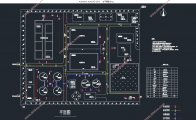苏南某纺织染整废水处理工程(5000t/d)工艺设计(含CAD图)(任务书,开题报告,外文翻译,计算说明书13000字,CAD图10张)
摘要
随着纺织印染业的蓬勃发展,每年我国染整废水排放量超过17亿立方米。染整废水具有污染物浓度高、成份复杂、水质多变的特点,废水中的染料能吸收光线,降低水体透明度,对水生生物和微生物造成影响,不利于水体自净,同时造成视觉上的污染,给环境构成较大破坏。由于染料品种的变化以及化学浆料的大量使用,使废水含难生物降解的有机物,可生化性差,因此,染整废水是一种较难处理的工业废水。
根据该纺织厂的染整废水水质的实际情况,釆用“水解酸化+生物接触氧化+物化”的染整废水的处理工艺,经调试运行表明:
①水解酸化池挂膜稳定后,能使B/C比从0.15提升到0.42,增加可生化性;且色度的去除率达到50%。
②接触氧化池中COD和NH4+-N的去除率分别达到74%和78%。
③当水解酸化池的HRT为14h,生物接触氧化阶段HRT为4h的情况下,生物接触氧化工艺对染整废水COD的去除率能维持在83%左右,水解酸化池对染整废水色度去除率基本保持在61%左右。
④整个工艺运行稳定,出水水质能够满足《纺织染整工业水污染物排放标准》(GB4287-2012)的直接排放标准。
关键词:染整废水;水解酸化;接触氧化;混凝沉淀
Abstract
With the vigorous development of textile printing and dyeing industry, the annual discharge of dyeing and finishing wastewater is more than 1 billion 700 million cubic meters.Dyeing wastewater has the characteristics of high concentration of pollutants, complex composition and water quality changing, dye wastewater can absorb light, reducing water transparency, impact on aquatic organisms and microorganisms, is not conducive to water purification, and can cause visual pollution, constitutes a great damage to the environment.Because of the variety of dyes and the extensive use of chemical slurry, the organic matter in wastewater is difficult to be biodegraded, so the dyeing wastewater is a kind of industrial wastewater which is difficult to be treated.
According to the actual situation of the dyeing and finishing wastewater in the textile mill, the treatment process of dyeing wastewater by hydrolytic acidification, biological contact oxidation and physicochemical process is introduced:
1.After the stabilization of the hydrolytic acidification tank, the ratio of B/C increased from 0.15 to 0.42, and the biodegradability was increased, and the chroma removal rate was up to 50%.
2.The removal rates of COD and NH4+-N in contact oxidation tank were 74% and 78%, respectively.
3.When the pool acid hydrolysis of HRT 14h, biological contact oxidation stage HRT to 5h in the case of dyeing wastewater COD removal rate can be maintained at about 83% biological contact oxidation process, the hydrolysis acidification tank for dyeing wastewater chroma removal rate remained at around 61%.
4.The operation of the whole process is stable, and the effluent quality can meet the discharge standard of water pollutants discharge standard of textile dyeing and finishing industry (GB4287-2012).
Key words: dyeing wastewater; hydrolytic acidification; contact oxidation; coagulation sedimentation
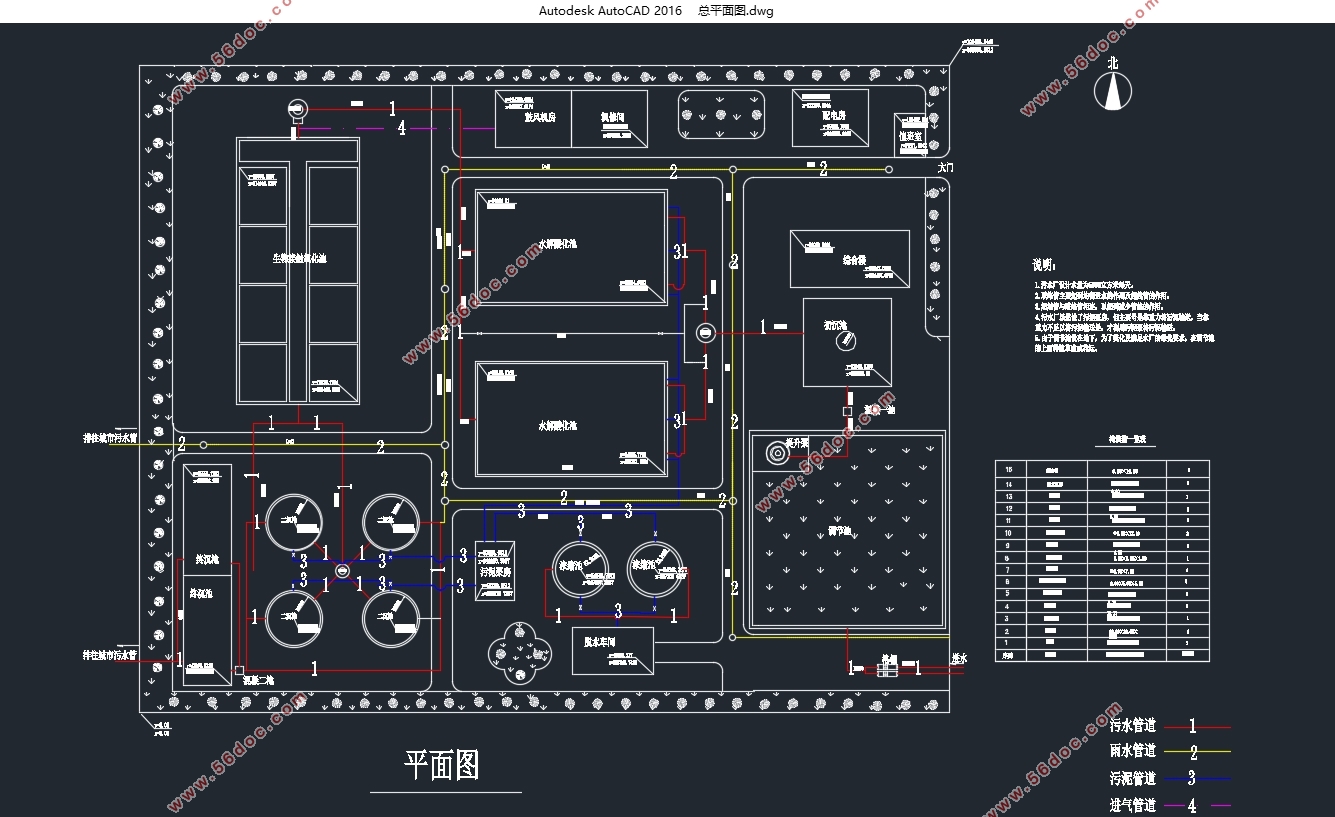
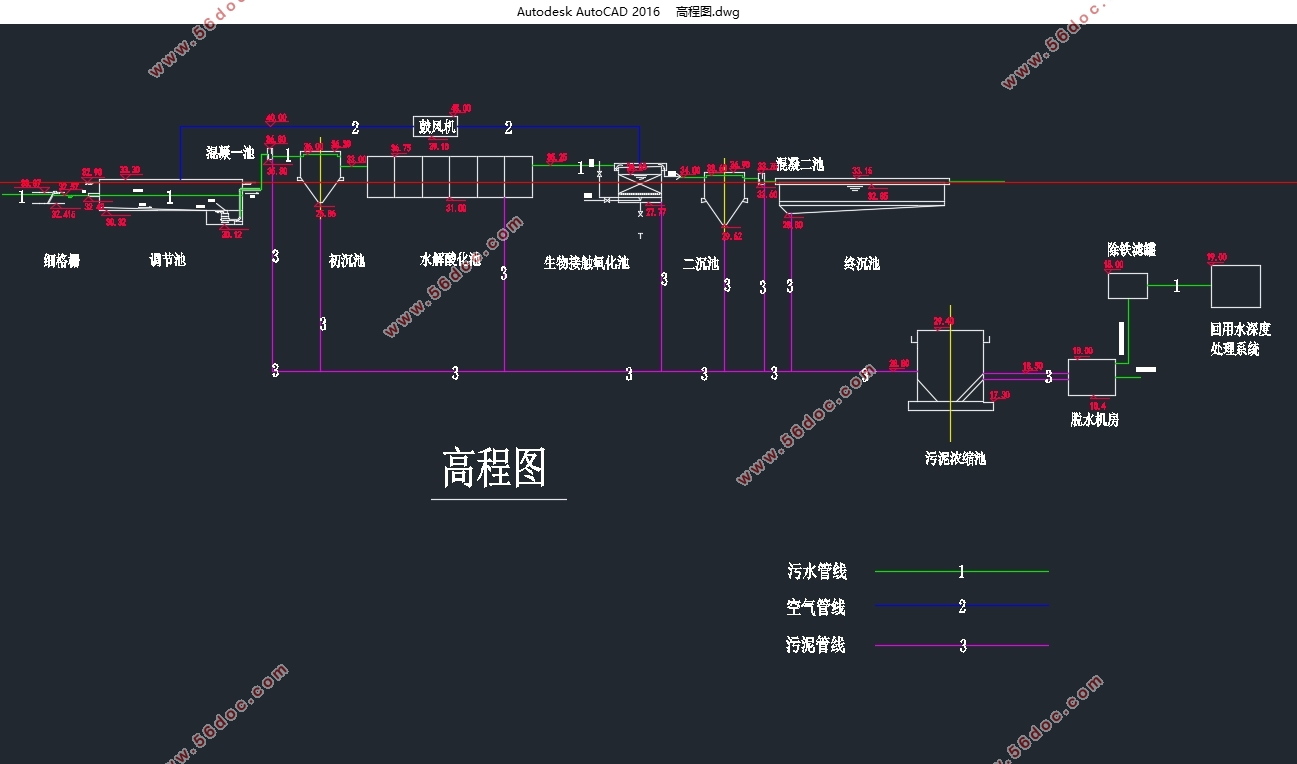
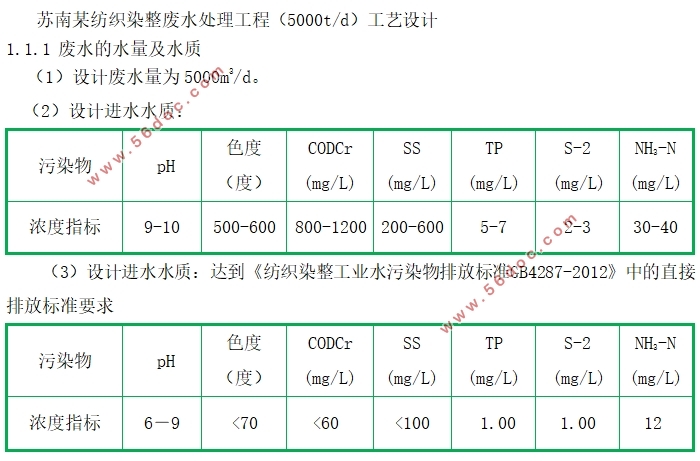
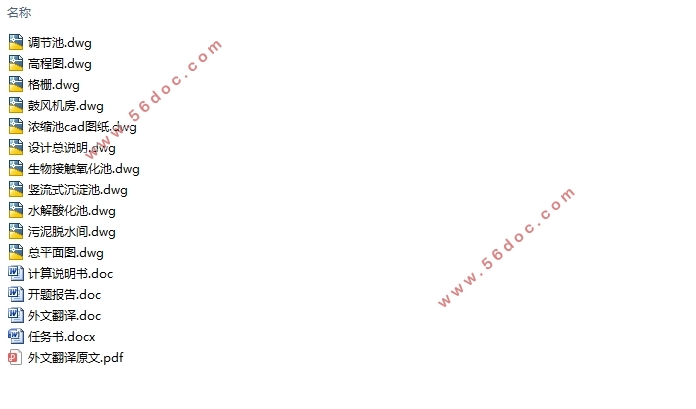
目录
摘要 1
Abstract 2
第一章 设计说明书 5
1.1 设计题目 5
1.1.1 废水的水量及水质 5
1.1.2 设计依据 5
1.1.3 设计原则 5
1.2 方案确定 6
1.2.1 活性污泥法: 6
1.2.2 生物接触氧化法: 6
1.2.3 生物接触氧化法和活性污泥法的比较 7
1.2.4 主要处理单元处理效率一览表 8
1.3 工艺流程 10
1.3.1 具体工艺流程 10
1.3.2 流程说明 10
第二章 工艺计算 12
2.1 格栅 12
2.1.1 设计参数 12
3.1.2 设计计算 12
2.2 调节池 14
2.2.1调节池的作用 14
2.2.2 设计参数 14
2.2.3 设计计算 14
2.2.4 潜污泵选型 15
2.2.5 搅拌机选型 16
2.3 混凝一池 16
2.3.1 设计概述 16
2.3.2 混凝剂选择 17
2.3.3 混凝剂的投加 17
2.3.4 溶液池容积 17
2.4 初沉池 18
2.4.1 设计概述 18
2.4.2 设计计算 19
2.5 水解酸化池 21
2.5.1 设计概述 21
2.5.2 设计计算 21
2.6 生物接触氧化池 22
2.6.1 设计概述 22
2.6.2 设计计算 24
2.6.3 鼓风曝气系统设计计算 25
2.6.4 风机选型 26
2.7 竖流式二沉池 27
2.7.1 设计概述 27
2.7.2 设计计算 27
2.7.3 污泥泵选型 29
2.8 混凝二池 29
2.9 终沉池 29
2.9.1 设计概述 29
2.9.2 设计参数 29
2.9.3 设计计算 30
2.10 浓缩池 31
2.10.1 设计概述 31
2.10.2 设计参数 32
2.10.3 设计计算 32
2.10.4 脱水机房 33
第三章 平面与高程布置 34
3.1 平面布置 34
3.1.1 设计概述 34
3.1.2 布置原则 34
3.2 高程布置 34
3.2.1布置原则 35
3.2.2设计计算 35
参考文献 37
致谢 38
|
